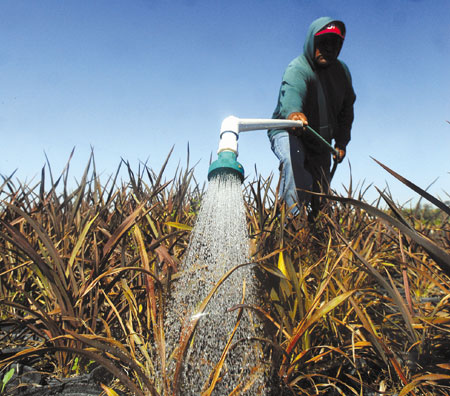
Citing the potential for lost revenues as well as a reduction in
productive farm land, the county Board of Supervisors is joining
with the local farm bureau to speak out against a plan to require a
buffer zone between ag land and water tributaries while adding
stricter water-quality monitoring requirements.
Citing the potential for lost revenues as well as a reduction in productive farm land, the county Board of Supervisors is joining with the local farm bureau to speak out against a plan to require a buffer zone between ag land and water tributaries while adding stricter water-quality monitoring requirements.
Supervisors this week approved sending a letter to the Central Coast Regional Water Quality Control Board expressing concern about proposed rules that would require a 100-foot buffer between agricultural operations and rivers, streams and other waterways along with the more stringent monitoring rules. Specifically, they are asking for an extension of a five-year waiver that has allowed farmers and landowners to be a part of a coalition that does monitoring at points throughout a watershed, rather than on every farm through which water runs.
Proposed changes would require that every landowner or farmer pay for and conduct monitoring along waterways near all farming operations, which many say would be too restrictive and cost-prohibitive.
“Unfortunately, in San Benito’s case, there are a lot of farmers that really would be hurt by the cost of individually monitoring water quality,” said county Supervisor Anthony Botelho, a farmer who represents the San Juan Valley.
He said that the coalition approach to monitoring, where water quality is monitored throughout a watershed rather than at every point of contact with ag land, has brought together constituencies that don’t always see eye-to-eye.
“Five years ago, the ag community and the environmental and regulatory communities came together and worked out their needs and that was the basis of the first ag waiver,” said Botelho, who pays approximately $150 per year to be a part of the water-monitoring coalition. “It was a very unique partnership to improve water quality along the Central Coast. I’m worried now that if we get overly restrictive, we’re going to lose those relationships and partnerships that have been forged.”
See the full story in the Pinnacle.









